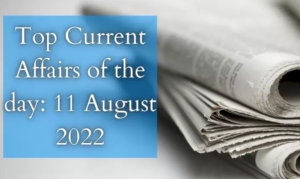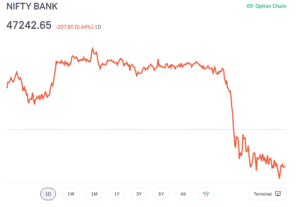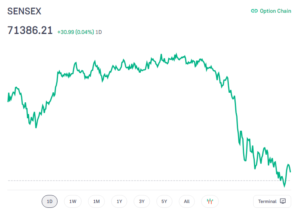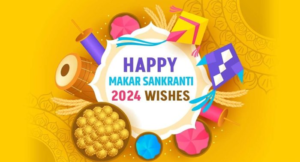
Dadasaheb Phalke International Film Festival Awards 2022
The prestigious ceremony of Dadasaheb Phalke International Film Festival Awards 2022 was held on February 20. The event was held in Mumbai and the best performances from last year were honoured in the event this time. This year Dadasaheb Phalke International Film Festival Awards 2022 celebrated the opulence of Indian Cinema and also commemorated the 75 years of Independence or Azadi ka Amrit Mahotsav.
Best Film, Best Actor, Best Actress, Best Supporting Role, and Best Negative Role, were among the other titles that were given to the personalities of the Indian film fraternity.
Here is a complete list of winners of Dadasaheb Phalke International Film Festival Awards 2022:
- Film of the Year Award: Pushpa: The Rise
- Best Film Award: Shershaah
- Best Actor Award: Ranveer Singh for film 83
- Best Actress Award: Kriti Sanon for film Mimi
- Outstanding Contribution to Films: Asha Parekh
- Critics Best Actor Award: Sidharth Malhotra
- Critics Best Actress Award: Kiara Advani
- Best Actor in Supporting Role Award: Satish Kaushik for film Kaagaz
- Best Actress in Supporting Role Award: Lara Dutta for film Bell-Bottom
- Best Actor in Negative Role Award: Aayush Sharma for film Antim: The Final Truth
- People’s Choice Best Actor Award: Abhimanyu Dasani
- People’s Choice Best Actress Award: Radhika Madan
- Best Debut Award: Ahan Shetty for film Tadap
- Best Playback Singer Male Award: Vishal Mishra
- Best Playback Singer Female Award: Kanika Kapoor
- Critics Best Film Award: Sardar Udham Singh
- Best Director Award: Ken Ghosh for film State of Siege: Temple Attack
- Best Cinematographer Award: Jayakrishna Gummadi for film Haseena Dilruba
- Best International Feature Film Award: Another Round
- Best Short Film Award: Pauli
- Best Actor in Web Series Award: Manoj Bajpayee for The Family Man 2
- Best Actress in Web Series Award: Raveena Tandon for Aranyak
- Best Web Series Award: Candy
- Best Actor in Television Series Award: Shaheer Sheikh for Kuch Rang Pyar Ke Aise Bhi
- Best Actress in Television Series Award: Shraddha Arya for Kundali Bhagya
- Television Series of the Year Award: Anupama
- Most Promising Actor in Television Series Award: Dheeraj Dhoopar for Kundali Bhagya
- Most Promising Actress in Television Series Award: Rupali Ganguly for Anupama
Haryana won Khelo India Youth Games 2021 title
Hosts Haryana won the Khelo India Youth Games (KIYG) 2021 title with 52 gold medals on the final day. Haryana also won 39 silver and 46 bronze medals, taking their overall medal tally to 137 medals – the highest cumulative haul by any state. The late surge helped Haryana leapfrog the 2020 champions Maharashtra on the KIYG medals table.
Key points:
- Maharashtra, meanwhile, managed 45 gold, 40 silver and 40 bronze medals to come second with 125 medals.
- Karnataka, with 22 gold, 17 silver and 28 bronze, finished third with 67 medals.
About the Khelo India Youth Games 2021:
- The Khelo India Youth Games 2021 started on June 4 across multiple venues with Haryana’s Panchkula hosting the bulk of the events. The Games, which are a part of the Indian government’s Khelo India initiative, concluded on June 13.
- This was Haryana’s second KIYG title. Haryana won the inaugural title in 2018 but finished second to Maharashtra in the next two seasons.
- This was the fourth edition of the Khelo India Youth Games. Some 4,700 athletes, including 2,262 women, from all of India’s 36 states and Union Territories participated at KIYG 2021.
- Hosts Haryana fielded the biggest contingent with 398 athletes, followed by Maharashtra with 357. A total of 33 states won at least one medal at KIYG 2021 while 28 won at least one gold.
List of Bharat Ratna Award 2022 Winners of All These Years
Bharat Ratna Award 2022 Winners List
The highest civilian award in India is the Bharat Ratna award which was instituted in the year 1954. Bharat Ratna award is awarded to the people for their exceptional public service and performance of the highest order in any field of human activity like literature science and art. Any person in any occupation sex or position is eligible for this award. In a year maximum of 3 people are awarded the Bharat Ratna award. Bharat Ratna award is presented by the president of India. The first Bharat Ratna award was awarded to politician C.Rajagopalachari, philosopher Sarvepalli Radhakrishnan, and scientist CV Raman in the year 1954. This award is also awarded posthumously, till now 16 people are awarded Bharat Ratna posthumously.
About Bharat Ratna Award
In a year only three Bharat Ratna awards are awarded. According to article 18 1 of the constitution, the award Bharat Ratna cannot be used as a prefix or suffix to the recipient’s name. The recipient of the award is facilitated with a sanad or certificate signed by the president and a medal. The youngest Bharat Ratna recipe in India was Sachin Tendulkar who received this award in the year 2014 when he was 40 years old. The middle is in the form of a people’s life which is 5.8 cm long, 4.7 cm wide, and 3.1 mm thick. It is a bronze medal and in the middle of the medal, the image of the sun is embossed which is 1.6 CM in diameter. On the other side of the medal state emblem and the Moto of the country are written in Devnagri script.
List of Bharat Ratna award winners
Till now 48 persons got the Bharat Ratna award and 16 were awarded posthumously. A list of all the people who were facilitated with the Bharat Ratna award is listed below with their contributions to society.
| Year | Recipients | About |
| Bharat Ratna 1954 | C. Rajagopalachari | Activist, statesman, and lawyer |
| Sarvapalli Radhakrishnan | India’s first Vice-President and second President | |
| C. V. Raman | Physicists, mathematicians, and scientists | |
| Bharat Ratna 1955 | Bhagwan Das | Activist, philosopher, and educationist |
| M. Visvesvaraya | Civil engineer, statesman, and Diwan of Mysore | |
| Jawaharlal Nehru | Activist and author served as the Prime Minister of India | |
| Bharat Ratna 1957 | Govind Ballabh Pant | Activist and first Chief Minister of Uttar Pradesh |
| Bharat Ratna 1958 | Dhondo Keshav Karve | Social reformer and educator |
| Bharat Ratna 1961 | Bidhan Chandra Roy | physician, political leader, philanthropist, educationist, and social worker |
| Purushottam Das Tandon | Activist and speaker of the United Provinces Legislative Assembly | |
| Bharat Ratna 1962 | Rajendra Prasad | Activist, lawyer, statesman, and scholar |
| Bharat Ratna 1963 | Zakir Husain | Activist, economist, and education philosopher served as a Vice-Chancellor of Aligarh Muslim University and the Governor of Bihar |
| Pandurang Vaman Kane | Indologist and Sanskrit scholar, known for his five-volume literary work | |
| Bharat Ratna 1966 | Lal Bahadur Shastri | Activist and served as the second Prime Minister of India |
| Bharat Ratna 1971 | Indira Gandhi | First women Prime Minister of India |
| Bharat Ratna 1975 | V. V. Giri | Trade Unionist |
| Bharat Ratna 1976 | K. Kamaraj | Independence activist and statesman, former Chief Minister of Tamil Nadu |
| Bharat Ratna 1980 | Mother Teresa | Catholic nun and the founder of the Missionaries of Charity. |
| 1983 | Vinoba Bhave | activist, social reformer, and a close associate of Mahatma Gandhi |
| Bharat Ratna 1987 | Khan Abdul Ghaffar Khan | First noncitizen, independence activist |
| 1988 | M. G. Ramachandran | Actor turned politician, Chief Minister of Tamil Nadu |
| Bharat Ratna 1990 | B.R. Ambedkar | Social reformer and leader of the Dalits |
| Nelson Mandela | Leader of the Anti-Apartheid Movement in South Africa, President of South Africa | |
| Bharat Ratna 1991 | Rajiv Gandhi | Gandhi was the ninth Prime Minister of India serving from 1984 to 1989. |
| Vallabhbhai Patel | Activist and first Deputy Prime Minister of India | |
| Morarji Desai | Activist, and Prime Minister of India | |
| Bharat Ratna 1992 | Abul Kalam Azad | activist and first Minister of education |
| J. R. D. Tata | Industrialist, philanthropist, and aviation pioneer | |
| Satyajit Ray | Director, film-maker, writer, novelist | |
| Bharat Ratna 1997 | Gulzarilal Nanda | Activist, and interim Prime Minister of India. |
| Aruna Asaf Ali | Activist | |
| A.P.J Abdul Kalam | Aerospace and defense scientist | |
| Bharat Ratna 1998 | M. S. Subbulakshmi | Carnatic classical vocalist |
| Chidambaram Subramaniam | Activist and former Minister of Agriculture of India | |
| Bharat Ratna 1999 | Jayaprakash Narayan | Activist, and social reformer |
| Amartya Sen | Economist | |
| Gopinath Bordoloi | Activist | |
| Ravi Shankar | Musician, sitar player | |
| Bharat Ratna 2001 | Lata Mangeshkar | Singer |
| Bismillah Khan | Hindustani classical shehnai player | |
| Bharat Ratna 2009 | Bhimsen Joshi | Hindustani classical vocalist |
| Bharat Ratna 2014 | C. N. R. Rao | Chemist and professor, author |
| Sachin Tendulkar | Cricketer | |
| Bharat Ratna 2015 | Madan Mohan Malaviya | Scholar and educational reformer |
| Atal Bihari Bajpayee | Elected nine times to the Lok Sabha, twice to the Rajya Sabha, and served as the Prime Minister of India for three terms. | |
| Bharat Ratna 2019 | Pranab Mukherjee | Indian politician, and senior leader in the Indian National Congress |
| Nanaji Deshmukh | A social activist from India, education, health, and rural self-reliance | |
| Bhupen Hazarika | Indian playback singer, lyricist, musician, singer, poet, and film-maker from Assam, |
FAQs Related to Bharat Ratna Award
1. Who are the recipients of the Bharat Ratna award 2019?
Ans. The recipe and soft Bharat Ratna awards for the year 2019 are activist Nanaji Deshmukh, who was a social activist, Pranab Mukherjee, was a politician and the President of India from 2012 to 2017 and Bhupen Hazarika who was Indian playback, singer, lyricist, singer, poet, filmmaker, and musician.
2. How many Bharat Ratna awards can be given in a year?
Ans. In a year maximum of three Bharat Ratna awards are given to the people who have exceptional public service performance in the society.
3. Who is the first post-Humous recipient of the Bharat Ratna award?
Ans. The first post-Humous recipient of the Bharat Ratna award was former prime minister Lal Bahadur Shastri, he was a social activist.
Angelo Mathews and Tuba Hassan crowned ICC Players of the Month for May
The International Cricket Council (ICC) has announced that Sri Lanka’s batting star Angelo Mathews and Pakistan’s debutante spin sensation Tuba Hassan have been voted the ICC Men’s and Women’s Players of the Month for May 2022. Fans can continue to vote every month for their favourite male and female cricketers across all formats of international cricket as part of the ICC Player of the Month initiative by registering at www.icc-cricket.com/awards.
Why this award is given to Angelo Mathews?
Mathews was selected the stand-out male player after piling on runs over the course of his side’s impressive ICC World Test Championship series victory against Bangladesh. Mathews becomes the first Sri Lankan player to be named the Player of the Month since its inception in January 2021, scooping the award ahead of fellow nominees Asitha Fernando (Sri Lanka), and Mushfiqur Rahim (Bangladesh).
Why this award is given to Tuba Hassan?
On the other hand, Hassan was awarded the to honour after enjoying significant success with the ball during her debut international series. The 21-year-old leg spinner was instrumental in restricting scores set by opponents Sri Lanka in the three-game T20I series in Pakistan, where she captured the Player of the Series award, taking five wickets at an average of 8.8 and an economy rate of 3.66. In securing this month’s award, Hassan overcomes fellow nominees in compatriot Bismah Maroof, and Jersey’s Trinity Smith. Tuba is the first female player from Pakistan to win in the award.
Important takeaways for all competitive exams:
- ICC Founded: 15 June 1909;
- ICC Chairman: Greg Barclay;
- ICC CEO: Geoff Allardice;
- ICC Headquarters: Dubai, United Arab Emirates.
Max Verstappen won Azerbaijan Grand Prix 2022
Red Bull’s Max Verstappen won the Azerbaijan Formula One Grand Prix 2022 (his fifth victory of the season). In the process, Verstappen became the most successful driver in the Red Bull of all time. Red Bull’s Sergio Perez came second and Mercedes’ George Russell came at the third spot.
However, the day was all about Max Verstappen who had one of the best races in his season, finishing on the podium after starting from number three. In the process, Verstappen became the most successful driver in the Red Bull of all time. The 24-year-old now has 66 podiums for Red Bull and is tied ninth for the most race wins alongside Jim Clark and Niki Lauda.
NCPCR’s Elimination of Child Labour Week: 12-20 June 2022
National Commission for Protection of Child Rights (NCPCR) is celebrating Elimination of Child Labour Week in the honour of World Day Against Child Labour. It is being celebrated in 75 places as part of the “75th anniversary celebrations of India’s independence – “Azadi ka Amrit Mahotsav” in different districts starting from 12th June to 20th June, 2022 as a significance to pay attention to the problem of child labour and to find ways to eradicate it.
National Commission for Protection of Child Rights (NCPCR) has been constituted by the Government of India, as a statutory body under section 3 of the Commissions for Protection of Child Rights (CPCR) Act, 2005 for dealing with the protection of child rights and related matters.
About the National Commission for Protection of Child Rights:
- The National Commission for Protection of Child Rights (NCPCR) emphasises the principle of universality and inviolability of child rights and recognises the tone of urgency in all the child related policies of the country.
- For the Commission, protection of all children in the 0 to 18 years age group is of equal importance. Thus, policies define priority actions for the most vulnerable children.
- This includes focus on regions that are backward or on communities or children under certain circumstances, and so on. The NCPCR believes that while in addressing only some children, there could be a fallacy of exclusion of many vulnerable children who may not fall under the defined or targeted categories.
- In its translation into practice, the task of reaching out to all children gets compromised and a societal tolerance of violation of child rights continues. This would in fact have an impact on the program for the targeted population as well.
- Therefore, it considers that it is only in building a larger atmosphere in favour of protection of children’s rights, that children who are targeted become visible and gain confidence to access their entitlements.
Important takeaways for all competitive exams:
- NCPCR Founded: March 2007;
- NCPCR Chairman: Priyank Kanoongo;
- NCPCR Headquarters: New Delhi, India.
Karnataka govt launched ‘FRUITS’ software for farmer schemes
The Karnataka government has launched ‘The Farmer Registration & Unified Beneficiary Information System’ or FRUITS software for Aadhar-based, single-window registration for the schemes. FRUITS software will facilitate single registration using an Aadhar card and Karnataka’s Bhoomi digitized land record system for authenticating ownership.
Through the creation of single digital identification through FRUITS, farmers can access benefits of hosts of schemes such as Direct Benefit Transfer under PM Kisan, payment for Minimum Support Prices (MSPs) for crops, special financial assistance, caste certificate authentication, and ration cards. To ensure that the farmers get easy access to benefits distributed under various government schemes, the Karnataka government has launched software for Aadhar-based, single-window registration for the schemes. The state departments of agriculture, horticulture, animal husbandry, revenue, food, civil supplies and fisheries departments of the state government are covered under the initiative.
Important takeaways for all competitive exams:
- Karnataka Governor: Thawar Chand Gehlot;
- Karnataka Chief Minister: Basavaraj Bommai;
- Karnataka Capital: Bengaluru.
India finalised deals for cheetahs from South Africa & Namibia
The Indian government has finalized deals with South Africa and Namibia to get the planet’s fastest animals, cheetahs that became extinct in India and will be released into the wild at Kuno Palpur, Madhya Pradesh, by the end of 2022. Initially, a Memorandum of Understanding (MoU) will be signed for 10 years, which can be extended for another five years. There will be 12 cheetahs from South Africa and 8 from Namibia and more will be followed in subsequent years.
The project to translocate cheetahs from Africa to India is a long-term, one-time project being implemented by the environment ministry with the help of the Wildlife Institute of India to reintroduce the cheetah into wild, which became extinct in India in the 1950s. The Supreme Court had appointed an expert panel, which approved Kuno Palpur as the possible location for cheetah relocation. In the past six months, the Madhya Pradesh forest department has prepared a 10 sq km enclosure with round-the-clock surveillance for reintroduction of cheetahs.
Asia’s ‘longest-tusked’ elephant Bhogeshwara dies of natural causes
Bhogeshwara, reportedly the elephant with the longest tusks in Asia, died of natural causes at the age of 60. The wild elephant, also known as Mr Kabini, was found dead in the Gundre range of Karnataka’s Bandipur Tiger Reserve. According to forest department officials, Bhogeshwar’s tusks were 2.54 meters and 2.34 meters long. Known for its gentle temperament, the elephant frequented the Kabini backwaters for the last three decades.
Both the tusks almost touched the ground and watching it roaming in the thick jungle was a visual treat. The viscera samples have been sent to the Regional Forensic Science Laboratory of Mysuru. Experts see no foul play and stated that it was a natural death.
Long distance running legend Hari Chand passes away
Long distance great Hari Chand, a two-time Olympian and a double Asian Games gold medallist, passed away in Jalandhar. He was 69. Chand won the 5000 and 10,000m gold at the 1978 Bangkok Asiad and also the 10,000m title at the 1975 Asian Championships in Seoul.
Chand, who hailed from Ghorewaha village in Punjab’s Hoshiarpur District, made waves with his barefoot running and broke the 10,000m National record at the 1976 Montreal Olympics which stood for 32 years before falling to Surendra Singh. He was eighth in his heats in Montreal, clocking 28:48.72s. And in the next Olympics, in Moscow 1980, he was 10th in the 10,000m heats and finished 31st in the marathon which had 74 runners.
Retail inflation for May matches estimates at 7.04%
According to data released by the Ministry of Statistics and Programme Implementation, India’s headline retail inflation rate eased to 7.04 percent in May from April’s near-eight-year high of 7.79 percent thanks to a favourable base effect. The fall in inflation in May is unlikely to do much to slow down the Reserve Bank of India’s (RBI) rate hike cycle. The Consumer Price Index (CPI) based inflation was 7.79 per cent in April. In May 2021, the retail inflation stood at 6.3 per cent.
Important points:
- Meanwhile, a rise in price across all items from fuel to vegetables and cooking oil pushed WPI or Wholesale Price Inflation to a record high of 15.08 per cent in April and retail inflation to a near eight-year high of 7.79 per cent.
- Retail inflation tracked by the Consumer Price Index (CPI) measures changes in prices from a retail buyer’s perspective.
- The Reserve Bank, which factors in the CPI in its monetary policy, had earlier this month raised the inflation forecast for the current financial year to 6.7 per cent from its previous estimate of 5.7 per cent.
38th India-Indonesia Coordinated Patrol Conducted in Andaman Sea
The 38th India-Indonesia Coordinated Patrol (IND-INDO CORPAT) between the Indian Navy Units of Andaman & Nicobar Command (ANC) and Indonesian Navy is being conducted from June 13 to 24 2022 in the Andaman Sea and Straits of Malacca. The 38th CORPAT is the first post pandemic Coordinated Patrol (CORPAT) between the two countries. It includes a visit by the Indonesian Navy units to ANC at Port Blair from June 13 to 15, 2022 followed by a Sea Phase in the Andaman Sea and visit by IN Units to Sabang (Indonesia) from June 23 to 24, 2022.
As part of Government of India’s vision of SAGAR (Security And Growth for All in the Region), Naval Component under the aegis of HQ ANC undertakes coordinated patrols with other littoral countries of the Andaman Sea along respective Exclusive Economic Zones (EEZ) towards enhancing regional maritime security.
About the CORPAT exercise:
The two Navies have been carrying out CORPAT along their International Maritime Boundary Line (IMBL) since 2002. This has helped build understanding and interoperability between both the Navies and has facilitated measures to prevent and suppress Illegal Unreported Unregulated (IUU) fishing, drug trafficking, maritime terrorism, armed robbery and piracy, etc. The IND-INDO CORPAT contributes towards forging strong bonds of friendship across the Andaman Sea and Straits of Malacca.
Important takeaways for all competitive exams:
- Indonesia Capital: Jakarta;
- Indonesia Currency: Indonesian rupiah;
- Indonesia President: Joko Widodo.
Bhopal Gas Tragedy: Consequences, Aftermath and Conviction.
Bhopal Gas Tragedy
The Bhopal Gas tragedy took place on 3rd December 1984 in Bhopal, Madhya Pradesh. It is one of the most horrific industrial accidents in history. 45 tons of dangerous gas methyl isocyanate was leaked from an insecticide plant that was owned by the Indian subsidiary of the American firm union carbide corporation. The gas immersed the aggressively in the then sleep populated areas of Bhopal. This incident killed thousands of people immediately and created panic in ten thousand people who attempted to flee Bhopal.
The total death toll was between 15000 to 20000. The gas left millions of people suffering from respiratory problems irritation or blindness and maladies resulting from exposure to toxic gas. The government later awarded compensation to the people of Bhopal. During the investigation, it was established that standard operating and safety procedures at the insecticide plant which was even understaffed led to this tragic event leaving thousands of people in shock. The formal factory site was turnover to the state government in 1998.
Consequences of Bhopal Gas Tragedy
During the 21st century, more than 400 tons of industrial waste was still present, which was decaying the site. There were several protests and attempts at litigation to do something about this issue for years. The Dow chemical company which both the union carbide corporation in 2001 did not take any action on this issue and the Indian government also revealed silence about this. The site was not cleaned properly, and the soil and water were contaminated in the area, which was resulting in chronic health problems and high instances of birth defects in the affected area. After several protests in 2004, the Indian supreme court ordered the state to supply clean drinking water for the residents of Bhopal because of the contamination of groundwater. In 2010, the conviction the court said that several former executives of Union Carbide’s Indian subsidiary which was run by a few citizens of India over the main culprit of the disaster due to negligence.
The Aftermath of UCC and UCIL
The majority of the factory was owned by the union carbide corporation and the Indian government only control the banks and the Indian public holding a 49.1% stake. The UCC paid 750 million dollars in 1989 to settle the litigation from the disaster. The UCC sold its stake in Union Carbide India Limited to Eveready Industries India Limited in 1994. The Eveready Industries India Limited subsequently merged with McLeod Russel Limited India. In 1998 Eveready ended the clean-up of the site when it terminated its 99-year lease and turn the control of the site to the state government of Madhya Pradesh. During these consequences down chemical company purchased Union Carbide Corporation in 2001 after 17 years of the disaster.
Courts Orders on Conviction
There were several civil and criminal cases filed in the United States against the union carbide corporation and Warren Anderson the CEO of UCC at the time of the disaster. However, these cases were dismissed and redirected to Indian courts during the year 1986 to 2012. The criminal and civil cases work also filed in India in the district court of Bhopal against UCC, UCIL, and the CEO of UCC Warren Anderson. In 2010, the former UCIL chairman and seven other Indian nationals who were employees at UCIL in 1984, were convicted in the Bhopal Gas tragedy for causing death by negligence and the sentence 2 years of imprisonment with a sign of $2000 each.
FAQs on The Bhopal Gas Tragedy
1. What is the Bhopal Gas Tragedy?
Ans. The Bhopal Gas tragedy or the Bhopal disaster took place on 3rd December 1984. In this incident, a poisonous gas methyl isocyanate was leaked from the insecticide plant which was owned by Union Carbide Corporation, and resulted in killing thousands of people in Bhopal.
2. How many people died in the Bhopal disaster?
Ans. As the record says 5,58,125 people were affected by the poisonous gas leaked from the insecticide plant causing the Bhopal disaster. After the mobile disaster, the land and water remained contaminated for several years causing people a lot of trouble related to health.
3. What was the amount of methyl isocyanate leaked from the Bhopal gas tragedy?
Ans. About 40 to 45 turns of methyl isocyanate were leaked from the insecticide factory between 2 to 2:30 a.m. exposing more than 5 lakh people.
Rashtriya Krishi Vikas Yojana (RKVY): About, Objectives and Features.
What is Rashtriya Krishi Vikas Yojana (RKVY)?
In 2007, Rashtriya Krishi Vikas Yojana was launched to provide and ensure the holistic development of agriculture and allied sectors. Through this scheme, each state government is allowed to choose their agriculture and allied sector development activities. The development activities must be based on district and state agriculture plans. The National Development Council launched this program due to concerns about the poor expansion of agriculture and related services. In the initiative, 100% of funding is done by the Central government, and this game was initiated as additional Central assistance to the state plan scheme.
The funding structure has been changed in 2015 and 2016, the ratio is 60 to 40 which is split between the center and the state government. After the implementation of the program, it has progressed significantly and has been executed into two plan periods. The extension of these projects includes crop development, horticulture, agriculture mechanization, natural resource management, post-harvest management, animal husbandry, marketing, fisheries, and dairy development.
What are the objectives of Rashtriya Krishi Vikas Yojana?
Since the Rashtriya Krishi Vikas Yojana was developed to increase the growth in the agriculture sector by adopting a holistic development of agriculture and solid sectors there are two objectives of this scheme which are listed below.
- The scheme aims to encourage each state government to enhance their public investment in agriculture and related services.
- It encourages the state government to be more flexible and autonomic in designing and implementing agriculture and related services programs.
- It targets interventions, and archive the goal of minimizing yield gas in critical crops.
- It ensures that the district and state make the agriculture plans. These plans must be based on agro-climatic conditions technological availability and natural resources.
- It guarantees that the local need or crops or priorities are highlighted in the state agriculture plans.
- The scheme ensures that using a holistic approach will bring 20 table changes in the production and productivity of many components of agriculture and associated sectors.
- The scheme ensures that the returns to the farmers in the agricultural and related industries are optimized.
Features of Rashtriya Krishi Vikas Yojana
- It is a state government scheme and the central government of India provides funds for the scheme.
- The state’s eligibility for Rashtriya Krishi Vikas Yojana is associated with the state’s plan expenditure for agricultural and allied sectors.
- The state government’s average expenditure for 3 years presiding the previous year is used to calculate the baseline of spending.
- There will be mandatory development of state and local agriculture plans.
- The funding was done by the central government but now the ratio is 60 to 40 which is split between Central and state governments.
- If the state has reduced its commitment in the subsequent years and withdraws its name from Rashtriya Krishi Vikas Yojana then the state has to commit that the remaining resources to finish the project have already begun.
Sectors covered under the Rashtriya Krishi Vikas Yojana
- Crop Cultivation and Horticulture
- Animal Husbandry and Fisheries
- Dairy Development, Agriculture Research, and Education.
- Forestry and Wildlife
- Plantation and Agricultural Marketing
- Food storage and warehousing
- Sohail and water conservation
- Agriculture financial institutions, other agricultural programs, and cooperations.
FAQs related to Rashtriya Krishi Vikas Yojana
1. What is the mean objective of Rashtriya Krishi Vikas Yojana?
Ans. The main objective of Rashtriya Krishi Vikas Yojana is to develop agriculture as the main source of economic activity through the state government.
2. How is the eligibility for Rashtriya Krishi Vikas Yojana determined?
Ans. The eligibility of a state to apply for Rashtriya Krishi Vikas Yojana is based on the state maintaining and increasing the state plan expenditure for agriculture and allied sectors.
3. What is Rashtriya Krishi Vikas Yojana?
Ans. Rashtriya Krishi Vikas Yojana scheme was established in the year 2007, it insurance developed of agriculture and allied sectors. The schemes especially focus on and state to increase public investment in agriculture and allied sectors.
India’s first centralised AC railway terminal in Bengaluru becomes operational
The ultra luxury Sir M Visvesvaraya Railway Terminal in Karnataka’s capital city Bengaluru was made operational. The Ernakulam Tri-Weekly Express chugged trough the station to mark this special occasion. According to the railway officials, the air-conditioned SMV Railway Terminal is a Rs 314 crore project. It has solar rooftop panels and rainwater harvesting mechanism.
The railway terminal at the city’s Baiyappanahalli area, named after Bharat Ratna Sir M. Visvesvaraya, is equipped with state-of-the-art facilities and claims to have an airport-like aura. It was a joyous moment for the crew and passengers for being the first to use the city’s third major terminal, which is situated between Banaswadi and Baiyyappanahalli in the city. The other two major terminals in Bengaluru are Bengaluru City Railway Station and Yashwanthpur Railway Station.
OmniCard becomes 1st RBI licensed PPI to launch cash withdrawal across all ATMs PAN India
Payment solution provider, OmniCard has announced that it became the 1st RBI licensed PPI (prepaid payment instrument) to launch cash withdrawal using a RuPay-powered card from any ATMs across the country. The move came in after RBI permitted the non-bank licensed entities to enable cash withdrawals from the digital wallets.
OmniCard users can withdraw cash from any ATM at their convenience with full security from frauds like card theft, card cloning, and PIN skimming as the withdrawal facility comes with high safety & secure features and protects the user from exposing their money and bank account details. The company worked with the National Payments Corporation of India (NPCI) team to enable the facility.
Key features:
- Run by Noida-based Eroute Technologies, Omnicard is a RuPay powered prepaid card with a mobile app where the users can spend using swipe, scan, tap and pay online, avail in-app offers from partner brands and get rewarded on every spends.
Important takeaways for all competitive exams:
- Co-Founder and Chief Executive Officer (CEO) of OmniCard: Sanjeev Pandey.
Complete and Updated List of Ramsar sites in India.
What is the Ramsar site?
The Ramsar Site is a wetland site that is designated to be of international importance under the Ramsar convention. This convention is also known as the convention of wetlands. It is intergovernmental environmental pretty established in 1971 by UNESCO and was first in 1975. It provides conservation of wetlands and sustainable use of resources. In 2022 there are 2437 Ramzan sites around the world and 49 of them are situated in India.
In 2022 Bakhira wildlife sanctuary in Uttar Pradesh and Khijadiya wildlife sanctuary in Gujarat were included as Ramsar sites on the occasion of World wetland day held at Sultanpur National Park Haryana which is also a Ramsar site. There are 49 Ramsar sites in India from which the first Ramsar site was Chilika Lake in Orissa and Keoladeo National Park in Rajasthan. The Renuka wetland in Himachal Pradesh is the smallest Ramsar Wetland site in India. The maximum number of Ramsar sites are found in Uttar Pradesh in India.
List of Ramsar Sites in India
| Ramsar Site | State | Area (Km2) |
| Ashtamudi Wetland | Kerala | 614 |
| Beas Conservation Reserve | Punjab | 64 |
| Bhitarkanika Mangroves | Odisha | 650 |
| Bhoj Wetland | Madhya Pradesh | 32 |
| Chandra Taal | Himachal Pradesh | 0.49 |
| Chilika Lake | Odisha | 1165 |
| Deepor Beel | Assam | 40 |
| East Kolkata Wetlands | West Bengal | 125 |
| Harike Wetland | Punjab | 41 |
| Hokera Wetland | Union Territory of J&K | 13.75 |
| Kanjli Wetland | Punjab | 1.83 |
| Keoladeo National Park | Rajasthan | 28.73 |
| Keshopur-Miani Community Reserve | Punjab | 34 |
| Kolleru Lake | Andhra Pradesh | 901 |
| Loktak Lake | Manipur | 266 |
| Nalsarovar Bird Sanctuary | Gujarat | 123 |
| Nandur Madhameshwar | Maharashtra | 14 |
| Nangal Wildlife Sanctuary | Punjab | 1 |
| Nawabganj Bird Sanctuary | Uttar Pradesh | 2 |
| Parvati Arga Bird Sanctuary | Uttar Pradesh | 7 |
| Point Calimere Wildlife and Bird Sanctuary | Tamil Nadu | 385 |
| Pong Dam Lake | Himachal Pradesh | 156.62 |
| Renuka Lake | Himachal Pradesh | 0.2 |
| Ropar Wetland | Punjab | 13.65 |
| Rudrasagar Lake | Tripura | 2.4 |
| Saman Bird Sanctuary | Uttar Pradesh | 5 |
| Samaspur Bird Sanctuary | Uttar Pradesh | 8 |
| Sambhar Lake | Rajasthan | 240 |
| Sandi Bird Sanctuary | Uttar Pradesh | 3 |
| Sarsai Nawar Jheel | Uttar Pradesh | 2 |
| Sasthamkotta Lake | Kerala | 3.73 |
| Sundarban Wetland | West Bengal
|
4230
|
| Surinsar-Mansar Lakes | Union Territory of J&K | 3.5 |
| Tsomoriri | Union Territory of Ladakh | 120 |
| Upper Ganga River (Brijghat to Narora Stretch) | Uttar Pradesh | 265.9 |
| Vembanad-Kol Wetland | Kerala | 1512.5 |
| Wular Lake | Union Territory of J&K | 189 |
| Asan Barrage | Uttarakhand | 4.44 |
| Kanwar Taal or Kabar Taal Lake | Bihar, Begusarai | 26.2 |
| Sur Sarovar | Uttar Pradesh, Agra district | 4.31 |
| Lonar Lake | Maharashtra, Buldhana district | 4.27 |
| Tso Kar | Ladakh, Leh district | 95.77 |
| Sultanpur NP | Haryana | 142.5 |
| Bhindawas WLS | Haryana | 4.11 |
| Thol Lake | Gujarat | 6.99 |
| Wadhvana Wetland | Gujarat | 10.38 |
| Haiderpur Wetland | UP | 69 |
| Bakhira WLS | UP | – |
| Khijadia WLS | Gujarat | 6 |
FAQs related to Ramsar sites
1. Which is the first Ramsar site designated from Maharashtra?
Ans. The first Ramsar site designated in Maharashtra was Nandur Madhameshwaar.
2. Which is the smallest Ramsar site in India?
Ans. Renuka is the smallest Ramsar site in India which is located in Himachal Pradesh.
3. How many Ramsar wetland sites are there in India?
Ans. In the year 2022 as reported there are 49 Ramsar wetland sites in India.








